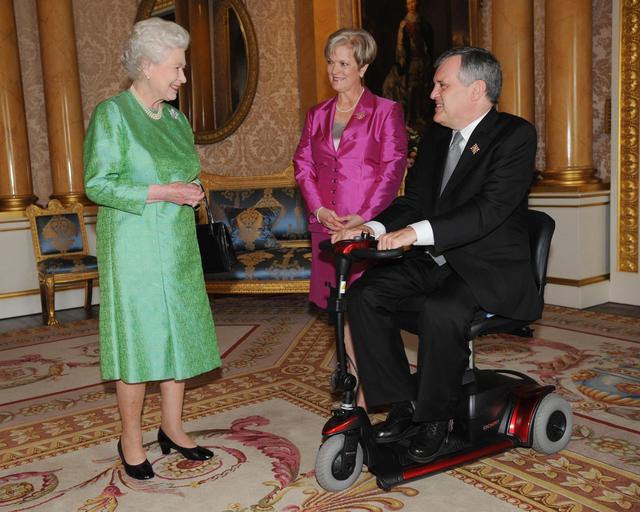
No Limits: How a Mobility Scooter Can Enhance Your Daily Life
Mobility scooters aren’t just for people with disabilities or limited mobility – they’re for anyone who wants to make their daily life easier and more enjoyable. With a scooter, you can run errands, go shopping, visit friends, and explore your community with ease. You’ll no longer have to worry about fatigue or discomfort from walking long distances, and you’ll have more energy and time to enjoy the things you love.
Thinking of buying a Mobility Scooter? We have some answers for you.

How to get a mobility scooter through Medicare?
Medicare Part B may cover the cost of a mobility scooter if certain criteria are met, such as a doctor’s prescription and a medical necessity for the device. To get a mobility scooter through Medicare, the individual must be enrolled in Medicare Part B, and their doctor must fill out a Certificate of Medical Necessity (CMN) form, which outlines why the individual needs a mobility scooter. After the CMN is completed, the individual can then find a durable medical equipment (DME) supplier that accepts Medicare and has a contract with Medicare to provide mobility scooters. The supplier will bill Medicare directly for the cost of the scooter, and the individual will pay any remaining deductible or co-insurance.
How do I qualify for a free mobility scooter?
There are some organizations and programs that may provide free mobility scooters to individuals who meet certain eligibility requirements, such as low-income or disabled individuals. Some examples include the Muscular Dystrophy Association, the ALS Association, and the Veterans Administration. To qualify for a free mobility scooter, the individual will typically need to provide documentation of their disability, income, or other eligibility criteria, and meet any other requirements set by the organization or program providing the device.
What mobility scooters are approved by Medicare?
Medicare will typically only cover the cost of mobility scooters that meet certain requirements, such as those that are medically necessary for the individual and that meet specific safety and performance standards. Medicare-approved mobility scooters may include those from well-known brands such as Pride Mobility, Drive DeVilbiss Healthcare, and E-Wheels, among others. It’s important to work with a DME supplier that accepts Medicare and has a contract with Medicare to provide mobility scooters to ensure that the device meets all of Medicare’s requirements.
What is the difference between a mobility scooter and an electric scooter?
While both mobility scooters and electric scooters are powered by electric motors, there are several key differences between the two devices. Mobility scooters are designed for individuals with mobility impairments and are typically larger and more stable than electric scooters. They also have features such as adjustable seats, armrests, and controls, as well as larger tires and more powerful motors. Electric scooters, on the other hand, are generally smaller and lighter and are designed for personal transportation or recreation.
Do you need a license for a mobility scooter?
In most cases, individuals do not need a license to operate a mobility scooter, as they are considered medical devices designed to assist with mobility impairments. However, laws and regulations regarding mobility scooters may vary by state or local jurisdiction, and some areas may require a special permit or license to operate the device on public roads or sidewalks. It’s important to check with local authorities to determine any specific rules or regulations that may apply.
Do you have to be disabled to use a mobility scooter?
While mobility scooters are designed primarily for individuals with mobility impairments, there are no specific disability requirements for using a mobility scooter. Anyone who has difficulty walking or standing for long periods of time may benefit from using a mobility scooter to improve their mobility and independence.
Buying guide: Mobility Scooters
How many types of mobility scooters are there?
There are several different types of mobility scooters, each with its own unique features and capabilities. Some common types include:
- Travel scooters: Lightweight and compact devices designed for easy transport and storage.
- 3-wheel scooters: Smaller and more maneuverable devices designed for indoor and outdoor use.
- 4-wheel scooters: Larger and more stable devices designed for outdoor use on rougher terrain.
- Heavy-duty scooters: High-capacity devices designed for larger individuals or those with higher weight requirements.
- All-terrain scooters: Robust devices designed for outdoor use on uneven or rough terrain, such as dirt paths or gravel roads.
Battery: What does Ah mean on a mobility scooter battery?
Ah stands for ampere-hours, which is a unit of measurement for the capacity of a battery. The Ah rating on a mobility scooter battery indicates how much energy the battery can store, and therefore how far the scooter can travel on a single charge. Higher Ah ratings generally mean longer range, but also typically result in a heavier battery.
Popular brands: Including E-Wheels, Pride Mobility, Drive DeVilbiss Healthcare
E-Wheels, Pride Mobility, and Drive DeVilbiss Healthcare are all popular brands of mobility scooters, known for their quality, reliability, and range of features. E-Wheels offers a range of high-performance scooters designed for outdoor use, while Pride Mobility specializes in mid-range and heavy-duty scooters with advanced suspension and comfort features. Drive DeVilbiss Healthcare offers a variety of affordable, entry-level scooters designed for indoor and outdoor use.
Speed: What is a good speed for a mobility scooter?
The top speed of a mobility scooter can vary depending on the type and model of the device. Generally, travel scooters and indoor models have lower top speeds, typically around 4-6 mph, while outdoor and heavy-duty scooters can have top speeds of up to 10-15 mph. The appropriate speed for a mobility scooter will depend on the individual’s needs and abilities, as well as the intended use of the device.
Weight capacity: What is the maximum weight for a mobility scooter?
The maximum weight capacity of a mobility scooter can vary depending on the type and model of the device. Some travel scooters and indoor models may have weight capacities of around 250-300 lbs, while heavy-duty and all-terrain scooters can have weight capacities of up to 500-600 lbs or more. It’s important to choose a mobility scooter with a weight capacity that is appropriate for the individual using the device to ensure safety and proper operation.
Safety: What are the safety features for mobility scooters?
Mobility scooters typically come with a range of safety features designed to protect the user and others around them. Some common safety features include:
- Lights and reflectors for improved visibility.
- Horn or warning signal to alert others.
- Anti-tip wheels to prevent tipping on uneven terrain.
- Brakes for stopping the scooter quickly and safely.
- Adjustable speed controls to limit speed in certain situations.
- Seat belt or harness to keep the user secure.
Brakes: Do mobility scooters have brakes?
Yes, mobility scooters typically come with brakes, which can be either manual or automatic. Manual brakes are typically operated by hand, either via a lever or a hand brake, while automatic brakes engage when the user releases the throttle or when the scooter is turned off. Brakes are an important safety feature on mobility scooters, and should be checked regularly to ensure proper operation.

